Design your home’s electrical system – Step-by-step guide
So, you just got your first home, and you were wondering about the different steps of creating the dream home for yourself. First, you think about how it would look like, how you’re going to furnish it and what the functions of the rooms are going to be. After that you realize, that you have to take other factors into consideration, such as lighting, heating, shading and other things you may not know that much about. The good news is, that it’s not as difficult as it sounds at first, and designing your home’s electrical system is not something only a professional can do.
A well thought-through elecrical plan ensures that your everyday life in your home will be the most comfortable and practical as it can be. So let us guide you through in a couple of easy steps on how you can do that and by the end, you will have a ready-to-use electrical system in your hands, created by YOU.
Step 1 – The basics – placing the socket outlets
Let’s start out by having a layout of your home, which ideally already includes the positions of the rooms and furniture. You have to arrange the locations and the number of the socket outlets you are going to need in each room. In case you are having a hard time figuring out how many is ideal for a room, there is a german standard that can help.
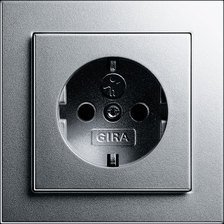
Regarding where you need to place them, take into consideration what the function of each room is going to be, for example, in your bedroom, you’re probably going to use the socket outlets next to your bed, but you would also probably need a couple more for other purposes, such as for the TV, computer, lamps or any other electrical device. You can also calculate with a USB socket outlet next to your bed, where you’re going to charge your phone.
You can think through the different rooms with the same logic, the living room, dining room, office will have a similar setup when it somes to the socket outlets. Figure out where you wish to place your desk, the couch or dining table and what special devices you might wish to use. Usually we group up to 4 sockets in one frame, but it’s up to you how many you’re going to need in the different areas. In the bathroom’s case, you need to place a safety socket outlet there, specialized for wet areas for safety purposes.
Once your’re done with these, electrical equipments that require higher voltage should also be taken into account, therefore special socket outlets, such as the washing machine’s, oven’s, cooktop’s, dishwasher’s or the fridge’s, just to name a few. When the electrician comes to your home, you have to be able to tell him/her, where and what kind of equipment you’re going to use and where you wish to place them.
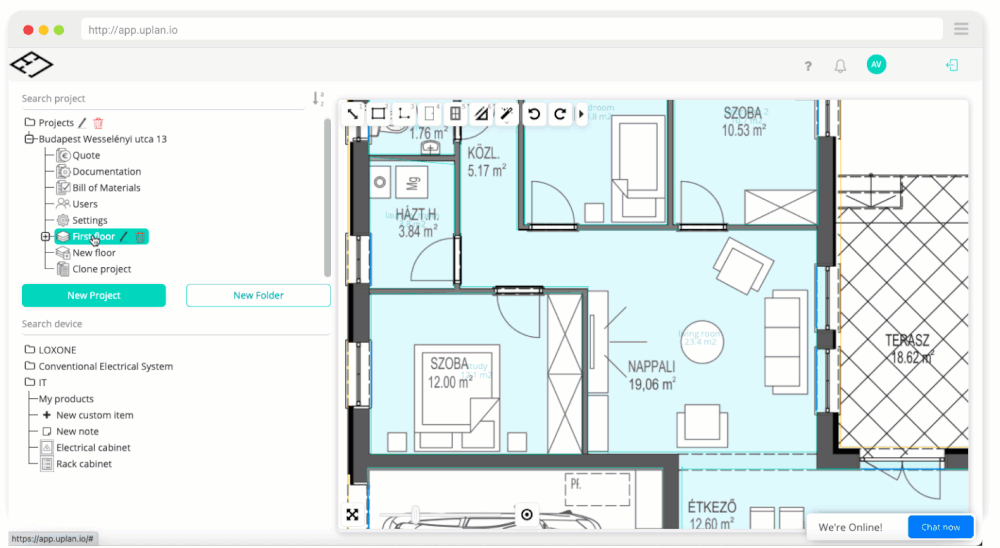
Step 2 – Lighting
We’re done with the first step and you already have a basic understanding on how your home is going to look like regarding the electrical devices. The next step is to design the lighting system. Obviously that means, you need to think about where you wish to place the lights in each room and not only that, but you also have to connect those lights with their switches and even create the so called lighting circuits where needed, meaning if you switch off the light for example in your living room, which lights should go off with the same switch as well.
You can choose to have regular rocker or dimmer switches. In your dining room, you might want to have a dimmer light, so you can easily create ambient lighting for dinner time.
It is up to you and your preference to decide what kind of light you prefer, whether you want to have spot lights in your living room of corridor or conventional lights, the possibilities are endless.
Step 3 – Other functions – Shading, HVAC, IT
Once all the lights, switches and socket outlets are in place, we can talk about every other function you could have in your home that are part of the electrical system. These can be the thermostat, presence sensors, switched blinds, access points, multi-audio-, or the CCTV system. These should also be included in your plan.
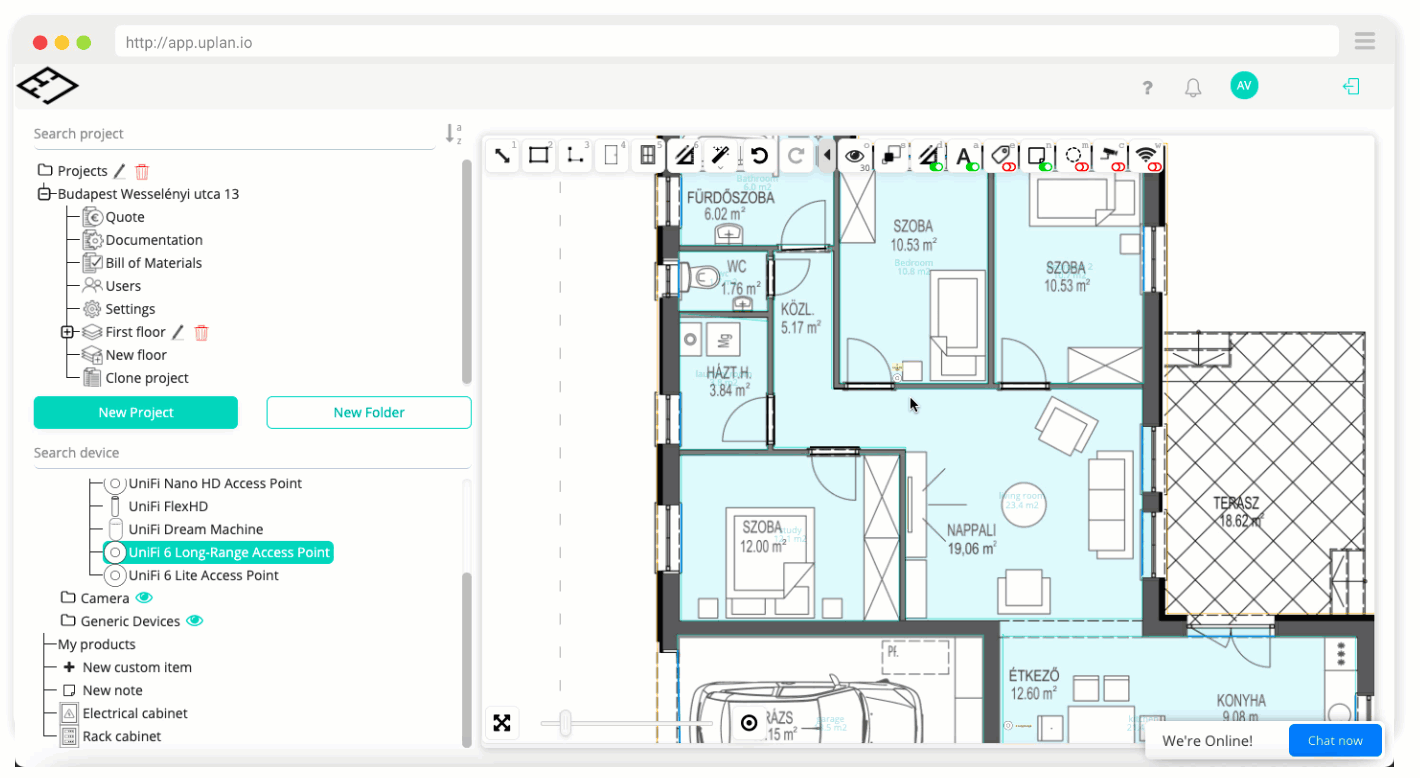
Step 4 – Home automation solutions
Nowadays, the demand for home automation solutions is increasing. If you go through the previous steps, you will realize that all of these functions we talked about can be replaced or even mixed with automated functions.
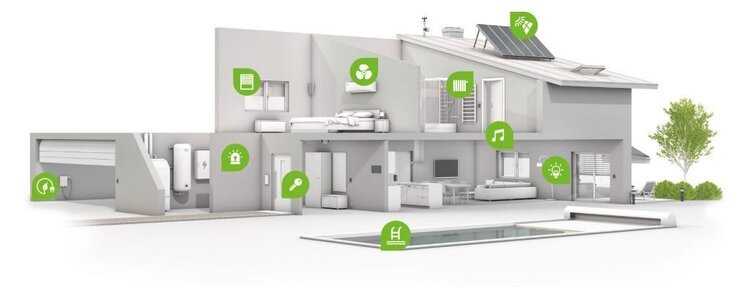
Lighting, shading, multi-audio, security or HVAC systems can be designed for your home in a way that works automatically. This is a constantly developing market, which becomes more and more affordable for the masses too. If you love coming home to a house where the temperature is perfectly set to fit your needs, where your music starts playing in any room you enter or where the lighting in the hallway will guide you to your kids’ room in the middle of the night thanks to the built in presence sensors, then you definitely have to look into home automation!
They are now easy to use, install, and can take your comfort to a whole new level.
Step 5 – The shortcut – uPlan
Now that your electrical plan is ready, you’re one step closer to designing your dream home. With this guide, we wanted to make the planning process easier and that’s why we have created our electrical planning software, uPlan, so you can have your ready-to-use electrical plan in minutes. By going through these steps, you would have a great understanding of how your electrical system will look like.
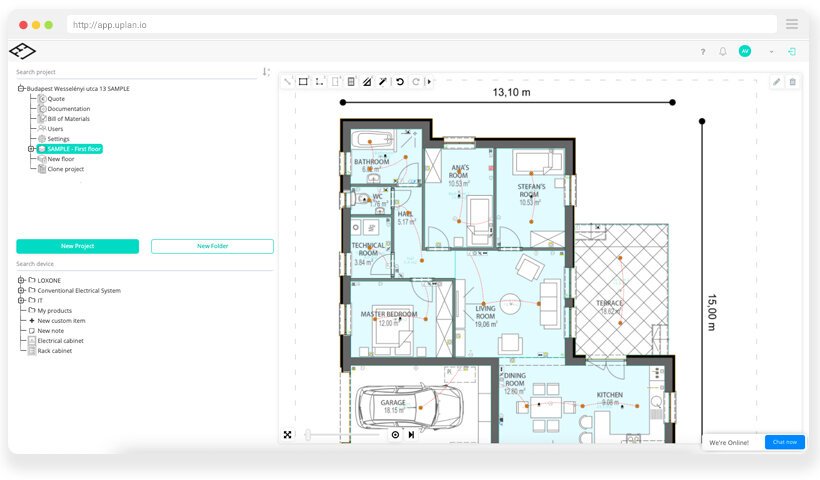
Click here to register and create your first project for FREE:
If you still feel like it could be simpler, go ahead and try our feature the uPlan Wizard, which will help you place and design your home’s electrical devices automatically.
Watch our tutorial video to see how it works:
Read our other guide to help you get started with planning.